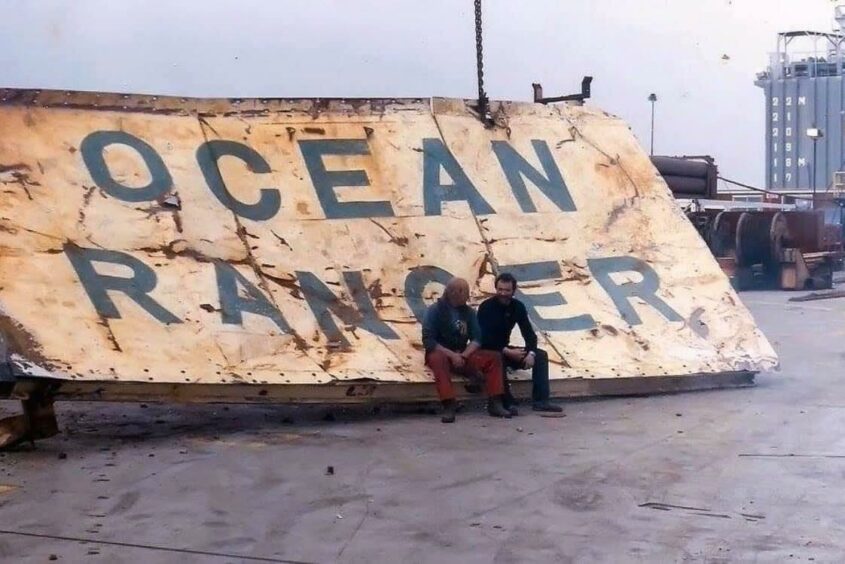
Forty years ago on February 15 1982, the Odeco semi-submersible drilling rig Ocean Ranger was lost in heavy seas and hurricane force winds on the fabled Grand Banks offshore Newfoundland.
A serious design fault in the shape of a porthole in the drilling rig’s ballast room, used to assess its trim (position in the water) using line of sight, was shattered by the massive seas, becoming the proverbial straw that broke the camel’s back and led to its sinking with the loss of all 84 on board.
Poor management practice both corporately and aboard the rig, coupled with the lack of effective safety oversight by the American Bureau of Shipping and relevant Canadian authorities, sowed the seeds of Ocean Ranger’s destruction.
This resulted in the deaths of every man aboard in water temperatures barely above freezing, through hypothermia and drowning due to the lack of even basic immersion suits.
They were mostly fit, young men … Americans and Canadians.
One whose picture happened to pop up on the Ocean Ranger Family and Friends page on Facebook really jarred – Michael Maurice, born June 5 in 1949, a year ahead of me.
His daughter Melissa posted: “RIP dad! Love and miss you every day!”
Had he survived, Michael would be 72 today and perhaps also a grandfather.
This Odeco rig’s loss 267km (166 miles) east of Newfoundland’s capital St John’s came virtually two years after the capsizing of the accommodation rig Alexander Kielland in the Norwegian North Sea on March 27 1980 with the loss of 123 lives.
The year following the Ocean Ranger’s sinking the Glomar Java Sea and all 81 of its crew were lost on October 25 1983 during a storm in the China Sea.
On September 22, 1988, just over two months after the Piper Alpha disaster that killed 167 offshore workers, a bigger sister to the Ranger, namely Ocean Odyssey, came within a hair’s breadth of being blown to pieces following a gas release and fire during drilling operations in the UK North Sea.
These tragedies variously involving two semi-submersible drilling rigs, one drillship, a drilling rig utilised as a flotel and a large production platform shared a set of common factors, not least the reliability of the 1970s technologies developed by and for Big Oil up to that point under adverse conditions, especially in bad weather and as a result of lousy decision-making by management.
They all raised questions about the adequacy of regulatory agencies in different offshore energy provinces at that time, bearing in mind the imperative to ensure that offshore operations are at all times supposed to be conducted safely.
That’s a tough call today; imagine how much more challenging it was in the 1980s.
I had some idea of how the oil companies behaved in those days as I was at the time serving with HM Coastguard at Aberdeen Maritime Rescue Co-ordination Centre, which had oversight of North Sea oil and gas operations. It was not a pretty picture.
Ocean Ranger was built by Mitsubishi Heavy Industries and delivered in 1976. It had been approved for ‘unrestricted ocean operations’ and designed to withstand extremely harsh conditions, including the those that destroyed it.
Prior to deployment on the Grand Banks to work on Mobil’s Hibernia oil discovery, it had worked in Alaskan, US Eastern Seaboard and Irish waters.
Ocean Odyssey was already on the drawing board in the late 70s, was built for Odeco in 1983 by Sumitomo and drilled its first well offshore Alaska.
It was basically an evolved Ocean Ranger and was initially even allocated the name Ocean Ranger II. But it was renamed Ocean Odyssey after the disaster and was similarly classed by the ABS for global service.
It emerged during the disaster inquiry that there appeared to be a misconception … failure of understanding … by some as to meaning of ABS classification and its limitations.
At the time the Ranger was constructed, the applicable ABS rules required that, as a condition of classification, a drilling unit was to have prepared to the satisfaction of the bureau, an operating manual to provide suitable guidance. That was Odeco’s responsibility.
THE STORM
At the time the storm struck, three semi-subs were working on the Grand Banks. Ocean Ranger was on its third Hibernia well while Sedco 706, was busy 13.6km (8.5 miles) to the North, North-east and Zapata Ugland was located 31km (19.2 miles) to the North.
On Valentine’s Day (14 February) 1982, the rigs were warned by maritime forecaster NORDCO about an approaching storm linked to a major Atlantic cyclone.
So, a wild night was in prospect in an area legendary for its terrible weather and ice.
CBC Archive notes that the storm began two days earlier as a weak disturbance in the Gulf of Mexico. By the 13th it was centred south of Nova Scotia, gathering strength as it moved towards Newfoundland. By the 14th it neared St. John’s.
“For most of the 14th the Ocean Ranger was battered by hurricane-force winds of over 100km (60-plus miles) per hour, with waves to 27m (88.5ft) — the height of a five-storey building,” CBC records.
Seas were also described as “high and short”; this is due to the complex subsea topography of the Grand Banks. Such conditions are commonplace in the North Sea too and very dangerous.
The usual method of preparing for bad weather aboard a semi- involves “hanging-off” the drill pipe at the sub-sea wellhead and disconnecting the riser from the blow-out preventer.
One version of events states that: “Due to surface difficulties and the speed at which the storm developed, the crew of Ocean Ranger were forced to shear the drill pipe after hanging-off, after which they disconnected the riser in the early evening.”
But the documentary series Disasters of the Century reported management discord aboard the rig and the chief tool-pusher was at loggerheads with the OIM (master) regarding when to abandon drilling and prepare the rig to ride out the storm.
The documentary broadcast in 2002 claimed they had “miscalculated conditions”.
One interviewee, Daniel O’Brien (president of Seascape 2000), stated: “They were totally mentally unprepared; totally and absolutely slack, Irresponsible behaviour; Beyond comprehension.”
Conditions deteriorated relentlessly on the 14th and, at around 19:00 local time, the Sedco 706 was hit by a rogue sea, which fortunately inflicted limited damage but washed away a liferaft.
However, shortly after, radio transmissions from Ocean Ranger were picked up which reported a smashed porthole and water in the ballast control room, with discussions on how best to repair the damage ensuing.
The rig reported 17m (55ft), occasionally 20m (65ft) seas at the time. The smashed ballast-room portlight was at the time located 8.5m (28ft) above the water line and very vulnerable to wave damage.
It is unclear whether the rig was anywhere near riding at survival draft at the time the port was smashed. But it became clear that relevant onboard personnel had never received instruction on how to fit its protective steel cover.
The documentary reports that, by the time the efforts were made to raise the rig to its survival draft, it was already much too late.
In essence, the ballast-room was washed out and the control panel inundated, leading to system failure.
From then on those on duty were unable to control ballasting operations. Moreover, indicator lights were malfunctioning and giving the wrong readings. They switched to manual control but they did more harm than good, making an already bad situation worse and leading to the rig listing more than it already was as, unbeknown to those involved, it also began to flood, especially through the vulnerable anchor chain lockers, which were not watertight.
Sometime after 21:00, radio conversations originating on Ocean Ranger were heard on Sedco 706 and Zapata Ugland, noting that “valves on Ocean Ranger’s ballast control panel appeared to be opening and closing of their own accord”.
The Ranger reported 100-knot (190 km/h) winds and waves up to 65ft (20m) high.
However, through the remainder of the evening, radio traffic between the neighbouring rigs and their support vessels appeared to be routine.
But the already dangerous situation changed drastically after midnight
At 01:30 on the 15th, Ken Blackmore, the night radio operator on the Ranger, called Mobil shore base and said that the crew were going to lifeboat stations and requested that another Mayday relay be transmitted.
After acknowledging what was to be the final transmission from the rig, Mobil immediately informed SAREC (Search & Rescue Eastern Canada). “The crew of the Ocean Ranger is gone to lifeboat stations now . . . [and] . . . they’re getting the 706 [to] relay another Mayday for them.”
SAREC was also told that the helicopters under contract to Mobil had been alerted and that all of the supply boats in the the Ocean Ranger’s vicinity had been directed to render assistance.
They were the Nordertor (dispatched from the Zapata Ugland) Boltentor (from SEDCO 706), while a further supply vessel not mentioned in the inquiry report, but which was on a routine run out to the rigs, was ordered back into St John’s to await further orders.
Its name was Kreuzturm and one of the young engineers aboard was Rick Brown (of whom more later).
The in-field standby vessel Seaforth Highlander, was requested to come in close to the distressed rig as countermeasures against the by then dangerous 10–15-degree list were proving ineffective.
The rig was to remain afloat for another 90 minutes, eventually turning turtle and sinking between 3:07 and 3:13 local time.
By daylight it became apparent that the Ranger’s entire complement of 84 workers – 46 Mobil employees and 38 contractors from various service companies – were dead.
The rig had an emergency procedures manual which detailed evacuation procedures but it is unclear how effectively the platform evacuation was carried out via the two Harding 50-person enclosed lifeboats.
The first boat encountered had men aboard. Crew on Seaforth Highlander could see that it was badly damaged yet under power. It got alongside the rescue vessel, was secured and rescue attempts begun.
But then, according to the Commission report: “The lifeboat began to roll slowly to port, away from the Seaforth Highlander, and within seconds capsized throwing the men who had been standing on the port gunwale into the sea and snapping the lines which had been attached to the Seaforth Highlander.
“As the men from the lifeboat spilled into the sea, the water in the immediate area was illuminated by the lights attached to the life preservers. The lifeboat had completely capsized.
“The time was 2:38am.”
A further attempt at rescue using one of the Highlander’s rafts failed.
“The men in the water were immobilized (by cold) and unable to make any effort to board the life-raft or grasp lines thrown to them and within their reach. Stormy seas, inadequate retrieval equipment, and the immobility of the men in the water made the rescue attempts futile.”
This same boat was eventually located at daybreak with 20 bodies strapped inside. The second lifeboat was not found until February 16. It was empty. Four empty life-rafts from the rig were also eventually picked up.
Rescue attempts by the standby vessels were hampered by the adverse weather conditions and the conclusion that they were neither equipped nor configured to rescue casualties from a cold sea. Were the men in the water wearing immersion suits? No; that was wishful thinking.
One of the lifeboats was briefly secured alongside one of the rescue vessels but it proved impossible to haul the survivors to safety. Everybody had apparently rushed to one side and the boat overturned.
The boat was lost and quickly swallowed up in the seething blackness.
The first helicopter did not arrive on scene until 2:30 local time, by which time most if not all of the rig’s crew had succumbed to hypothermia and were dead.
Over the following week, 22 bodies were recovered from the chill Atlantic. And, during subsequent salvage operations to move the wreck out of the field and re-sink, what remained of the Ranger was treated as a grave site, according to Rick Brown.
And, incidentally, a further three lives were lost during those operations. All were divers so, in effect, bringing the overall death toll to 87.
THE INQUIRIES
As with all maritime casualties, the loss of the Ocean Ranger immediately set in motion a series of inquiries, by the US Coast Guard (USCG) and the US National Transportation Safety Board in the United States, where the rig was registered, and by the Canadian government.
Of the investigations, the Royal Commission was the most comprehensive. It had a sweeping mandate: to determine not only why the rig sank, but also why none of the crew were saved and to explore how similar accidents could be avoided.
Its remit was to “go beyond the realm of acceptable conjecture or reasonable deduction based on circumstantial evidence”. It would use “scientific investigation to determine why in fact the Ocean Ranger, alone of three rigs on Hibernia, capsized and sank.”
Ultimately, and aside from the shocking weather, the Commission produced two reports and identified a number of critical issues that had to be addressed:
- Flaws in the rig’s design
- Industry failure to train workers properly
- Industry failure to implement effective safety systems including having standby vessel proximity rules; providing proper safety gear for all persons on board; and fit-for-purpose lifeboats.
- No nationally recognised standards for safety training
- Poor SAR response, particularly the federal government’s reliance on 20-year-old helicopters that were ill-equipped for offshore sea operations
- No requirement by government for companies to demonstrate competency of their workforces
- Inadequate regulatory oversight
The Commission came to the view that a better qualified crew could have prevented the disaster: “Indeed, had the crew only closed the deadlights, shut off the electrical and air supplies to the panel, cleaned up the water and glass and then retired for the evening, the Ocean Ranger and its crew would have survived the storm that night.”
Sweeping statement perhaps, but the solution was considered that simple.
THE SYSTEM
The regulatory system that was supposed to govern the oil and gas activity offshore Canada was found seriously wanting.
Three bodies had oversight … the federal government through COGLA (Canada Oil & Gas Lands Administration), provincial government through NLPD (Newfoundland-Labrador Petroleum Directorate) and the US Coast Guard because the rig was American-owned.
Both COGLA and NLPD assumed, but did not verify, that Odeco would comply with USCG safety regulations. And USCG oversight was lax.
The Commission recommended that a single Canadian agency regulate the industry, including drilling operations, the production of oil and gas, standby vessels, helicopters, and other rescue craft.
However, it was also noted that a row between Canada and Newfoundland for ownership of offshore resources weakened the two governments’ ability to impose a single and effective administrative system. Responses were distinctly variable.
The federal government in particular responded quickly and by July 1985 had acted on 90 of the 136 recommendations, with particular emphasis on SAR support and safety, including changes to the location and management of rig ballast control rooms.
Training also became heavily regulated and standards were set for both work and safety skills. Industry cooperated with the provincial and federal governments to make this happen.
But the biggest change of all was the creation of the Canada-Newfoundland Offshore Petroleum Board in 1985, later renamed Canada-Newfoundland and Labrador Offshore Petroleum Board (C-NLOPB). It replaced COGLA, NLPD, and the US Coast Guard as the single regulatory agency responsible for the Canadian offshore industry.
Has it all gone smoothly since? Well, no. It took years for some Commission regulations to be implemented and, as in the North Sea, the current generation of North American oil company management think they know it all, both on and offshore when patently they do not. That is a recipe for a future disaster.
TODAY
The loss of the Ocean Ranger gutted Newfoundland’s coastal communities, especially in the port capital St John’s where 84 families grieve to this day and only 22 families were able to come anywhere near closure because at least their loved ones were brought home for a decent burial.
This is a tough community with the sea in their blood. They are used to the loss of fishermen and their boats especially, but Ocean Ranger is in another league altogether.
Reflecting on the rig’s loss and its seismic impacts, Rick Brown is among those who were able to come to terms with the disaster and get on with life.
Rick is a lifelong marine engineer who then worked on the supply vessels. He has a passion for the sea and just recently renewed his ticket for a further five years, albeit on his terms as a relief engineer on a smart, modern Newfoundland ferry named Veteran.
“It was pretty shabby, putting a guy in charge of a ballast control room and not teaching him how to use emergency overrides,” said Rick, who lost good friends who worked on the rig.
“At night when we were standing by the Ranger, I’d see that porthole down in one of the rig’s legs and would wonder what a weird place for it to be … that little circle of light. And I’d ask myself: ‘I wonder what that’s for.’
“Of course, as I found out, it was so they (the guys in the ballast room) could look at the draft marks on the pontoons to see what the rig’s trim was.
“It was the Achilles heel of the rig.
“I was on the Kreuzturm at the time and on shift the night of the disaster. We were fully loaded, had left St John’s and were five or six hours out when we were recalled to stand by for further instructions. Something was going on.
“We got back to St John’s by which time the news about the Ocean Ranger had started coming in. We huddled around the radio.
“We were still tied up when the boats started arriving with the bodies that they had managed to recover. And the stories started coming from the lads who had stepped aboard our boat about what they had experienced. Hunting for bodies in atrocious conditions using search lights and trying to recover at least some bodies.
“In those times there was no such thing as PTSD counselling (for the crews of the recovery ships). They just tried to talk it out among ourselves. That’s how it was in those days.
“The same went for lifesaving apparatus (LSA). We were a supply vessel standing by a rig. All we had was a couple of open lifeboats in regular davits. There was basically nothing that we could have done anyway (had we been out there instead of tied up).”
After the Ocean Ranger sank, Kreuzturm was initially sent to the port of Mary’s Town, 306km (90 miles) from St John’s and spent the rest of the winter tied up. The other rigs were by then alongside too for maintenance.
“It was like everyone was licking their wounds. A lot of drinking and talking. That’s how sailors work things out. As I said, there was no counselling in those days.
“However, as offshore activities began to pick up again, first thing they (management) did was train all of us as paramedics. We got lifeboat manning certificates though all that basically meant was that it proved we could row the boats.
“The next thing that happened was that they put fast rescue craft aboard with rapid launch and recovery davits aboard the vessels. This was about retrieving survivors from the water quickly. We were extensively trained.
“My feeling on all that was, more than being of use, it was to make the people on the rigs feel that they were safe. We discussed it among ourselves and the captain said: ‘Of course we won’t be putting you guys (the supply vessel’s crew) out in those boats in any kind of bad weather.’
“I guess much of it was a kneejerk reaction to what had happened and how helpless we all felt. It was about all those chaps in the water and how powerless crews aboard the rescue vessels were that night the Ocean Ranger sank.”
Rick went on to become involved in supporting the clearance operations that were started in 1983 as there had been mounting concern about the wreck hindering operations in the Hibernia field.
In August 1983, the wreck of Ocean Ranger was refloated upside down and sunk in deeper waters by the Dutch firm Wijsmuller Salvage.
“When I was there at the raising of the Ranger … we were doing anchors for the Mighty Servant (heavy lifter) … there were discussions about the wreck and surrounding area also being a graveyard. So it was vital that bodies still down there were treated with respect.”
While he may have come to terms with the past, the most frightening thing to Rick today is how little progress has in reality been made when it comes to rescuing survivors from the sea.
“We didn’t have the gear then and, you know what, we still don’t. How do you get people aboard a big steel vessel in 60 and 80ft seas? It’s basically impossible. All the fancy lifesaving gear today? It’s all for the mind.
Recommended for you

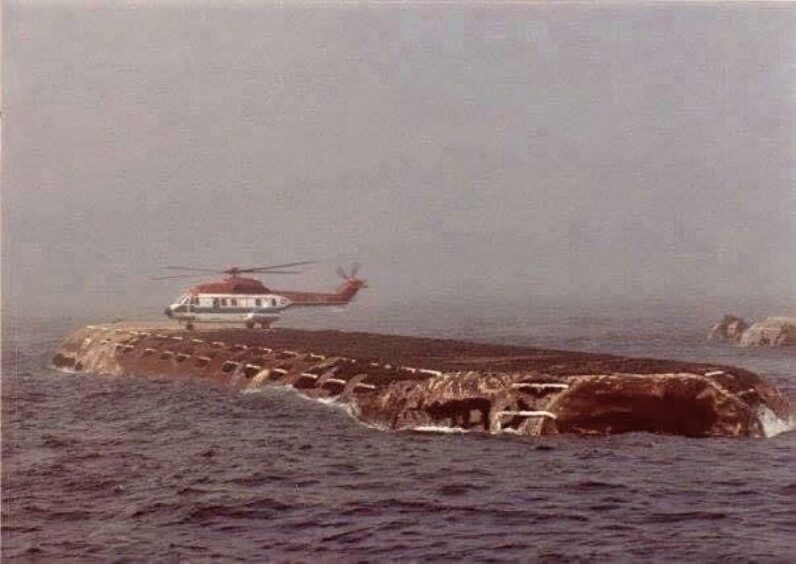 © Supplied by Rick Brown
© Supplied by Rick Brown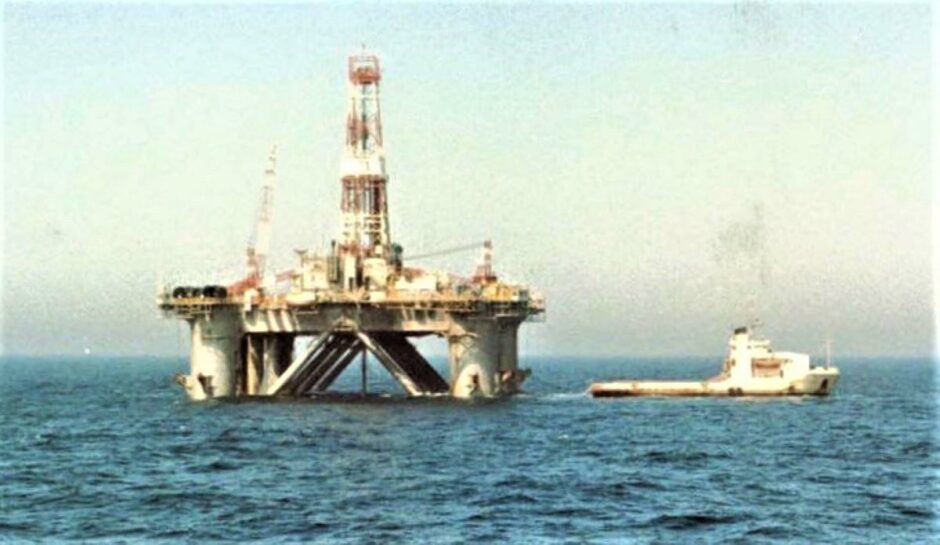 © Supplied by Rick Brown
© Supplied by Rick Brown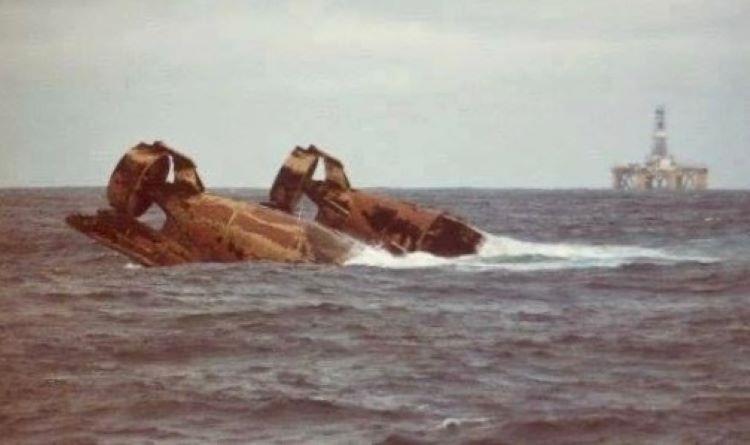 © Supplied by Rick Brown
© Supplied by Rick Brown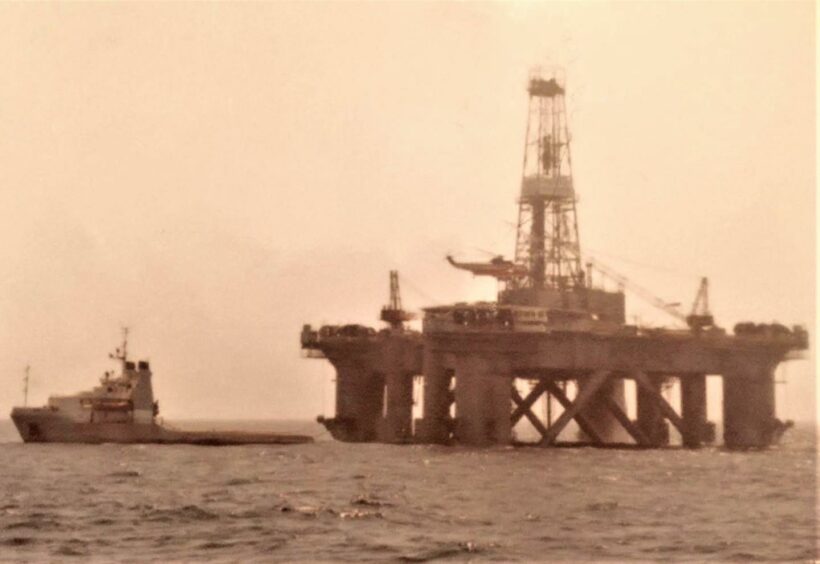 © Supplied by Rick Brown
© Supplied by Rick Brown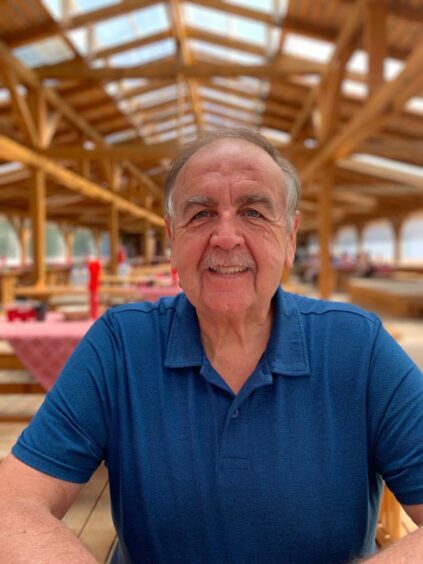 © Supplied by Rick Brown
© Supplied by Rick Brown